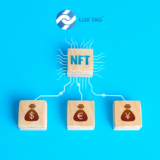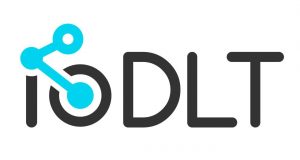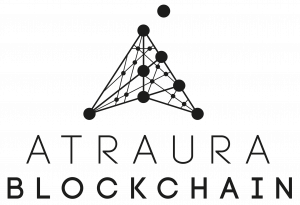Blockchain misunderstanding, misinterpretation and misconception…

Article about “Blockchain misunderstanding, misinterpretation and misconception…” first appeared on FullBlock Solutions
In this article, we’ll touch on some common misconceptions about blockchain technology. While most of the misconceptions may be valid in certain setups, all of those listed below are – in one way or another – causing misunderstanding or bias.
Our experience has shown it’s important to keep an open mind with regards to blockchain implementation, so we’ll present some opinions which are intended to be food for thought.
Misconception: All blockchains consume high amounts of energy
This originates due to many public blockchain protocols, among them, Bitcoin, are causing high energy consumption because of using PoW (Proof of Work) as their consensus algorithm. However, there are alternatives that require negligible amounts of energy which can even be less prone to certain attack vectors compared with PoW.
Alternatives to PoW have been used to secure (public) networks for over 5 years with no major issues. What’s important to know about network consensus is that there are many solutions (PoS, BFT, …) available that all have both benefits and drawbacks. Depending on the goals, there will likely be a solution that does not require high energy consumption, while still providing a robust result.
Blockchain Misunderstanding: Transaction fees
We’ve all heard some concerns about transaction fees in public blockchains which are usually a way to incentivize maintaining a robust network. These fees are usually distributed to whoever is running a node, with the goal of motivating more people to run nodes to achieve a larger and more decentralized network. Although some public blockchains have quite substantial fees, others have low, almost negligible fees.
Another concern can be the necessity for end-users to have some cryptocurrency to pay for the fees whenever they perform transactions. There are many ways to overcome this inconvenience: while some protocols have built-in solutions, it may not even be necessary to have a fee structure in permissioned networks.
Misinterpretation: Public vs Private/permissioned
This topic often causes (emotional) discussions. There are groups that have an aversion to ‘centralized’ permissioned blockchain solutions, even going as far as stating the only true blockchain use case is cryptocurrencies.
At FullBlock Solutions, we are of the opinion it’s up to the businesses to decide which solution works best. If a business can get value from running a private network that clearly has some centralization, then who are we to judge? On the other hand, we are passionate about blockchain solutions which bring value to the end-user where it’s often beneficial to aim for a more decentralized approach.
It’s not unlikely to be faced with challenges when aiming for decentralization, though with some creativity, it’s usually possible to come up with a good compromise. Often, this means a combination of public and permissioned chains which we call “hybrid chain solutions”. Sometimes it may be useful to develop the application(s) in such a way that it allows migrating parts or even the entire application from the permissioned to the public network, or vice versa.
Delusion: Using blockchain requires using smart contracts
“Smart contracts” and “blockchain” are words that are often used interchangeably, yet they are two completely different things.
It’s absolutely possible to use blockchain without smart contracts, and in many cases, the importance of smart contracts is extremely overrated. This topic will be discussed in more depth in one of our future articles.
At FullBlock Solutions, we believe introducing complexity can only be justified when there is a good reason to do so and no way around it. Smart contracts can be useful, but they can introduce unnecessary complexity, which increases both expense and potential failures, so it’s important to take a critical look at the value they really bring when developing applications.
Mistaken Belief: Blockchain is a stand-alone solution
Although for some simple use cases blockchain could be used as a stand-alone solution, for most applications, blockchain is part of a technology stack, though even with dApps, we often rely on other technologies that are used in conjunction with blockchain.
Fallacy: It’s impossible to integrate blockchain into legacy systems
While many legacy systems are highly entangled/intertwined which may cause problems or make cost-effective blockchain integration challenging, it’s probably not a reason to dismiss the technology altogether. With proper preparation and planning, it’s likely that parts of the legacy stack can be phased out and replaced gradually with blockchain components.
This misconception is a common result of poor understanding of what business processes can benefit from blockchain implementation, and where legacy technology remains a superior value proposition.
It should be mentioned that when legacy systems seem to be an insurmountable barrier – even when there’s a clear case for using blockchain – it may be time to reassess the long term strategy of the company. An important factor which should be taken into account at that time is how blockchain may be driving disruption in your industry. It may very well be the case that startups in your industry are using blockchain in a way that could make your business obsolete.
Misjudgment: Protocol ‘X’ is the only suitable choice for your applications
When assessing which technology is the right one for your use case, you will likely be forced to make some compromises.
There are many different flavours of blockchain protocols, and as a result, it’s highly likely your goals can be achieved in many ways, and most often by more than one protocol.
One crucial piece of advice we would like to give here is to ensure bias is not a driving factor in your technology decisions.
About FullBlock Solutions
FullBlock is a go-to-point for blockchain protocols, projects and companies interested in assessing, building or growing their project by providing blockchain insider know-how, from working years directly for blockchain protocols, with blockchain projects and companies.
Previous Article about Full Block Solutions
FullBlock Solutions: The former NEM Europe Team establishes blockchain consultancy firm









